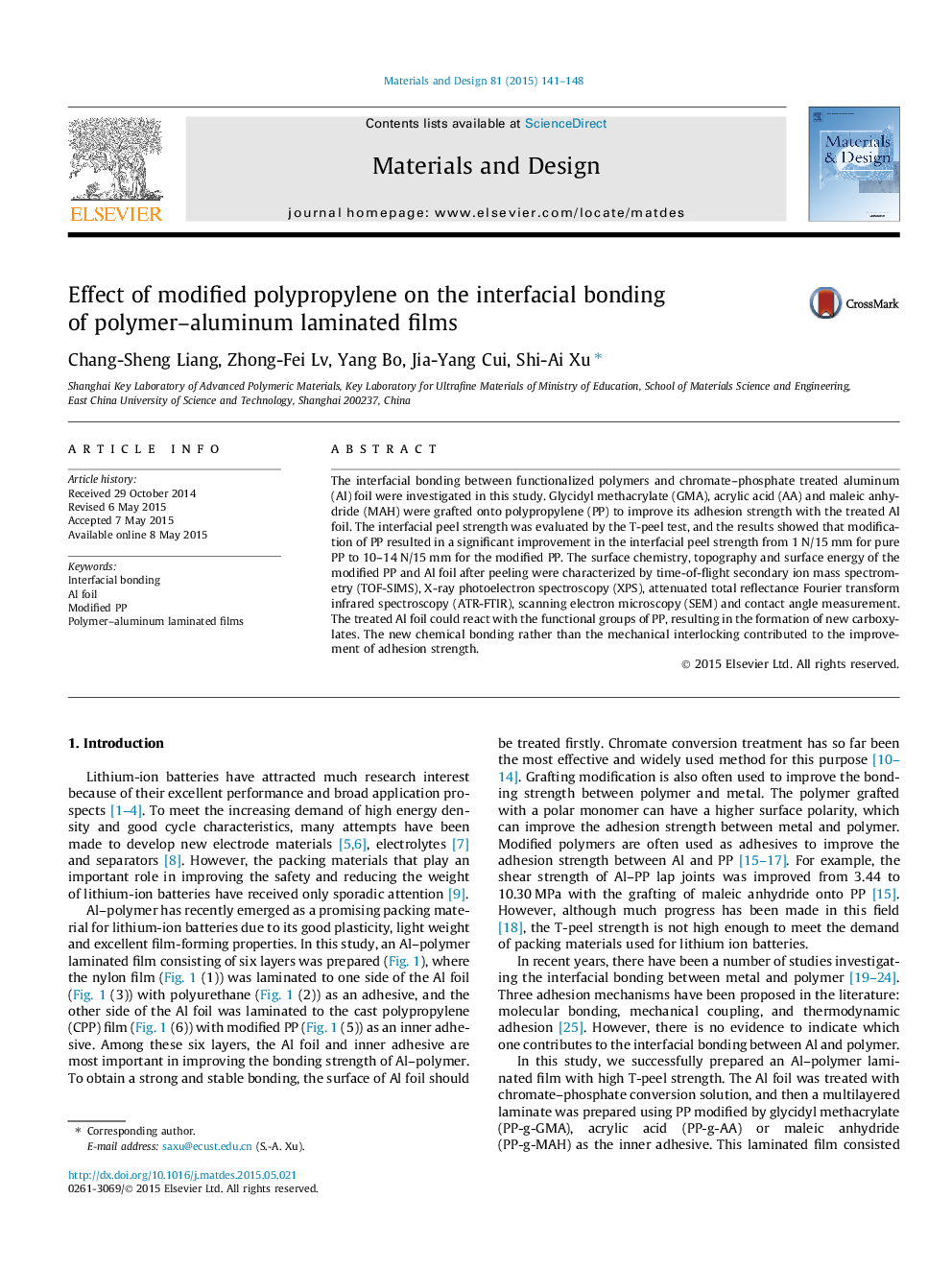| Article ID | Journal | Published Year | Pages | File Type |
|---|---|---|---|---|
| 828521 | Materials & Design (1980-2015) | 2015 | 8 Pages |
•Aluminium-polymer composite packing material with high T-peel strength was prepared.•Polypropylene was grafted by acrylic acid, glycidyl methacrylate, maleic anhydride.•Grafted polypropylene greatly improved the T-peel strength.•Chemical bonding plays an important role in improving the adhesion strength.
The interfacial bonding between functionalized polymers and chromate–phosphate treated aluminum (Al) foil were investigated in this study. Glycidyl methacrylate (GMA), acrylic acid (AA) and maleic anhydride (MAH) were grafted onto polypropylene (PP) to improve its adhesion strength with the treated Al foil. The interfacial peel strength was evaluated by the T-peel test, and the results showed that modification of PP resulted in a significant improvement in the interfacial peel strength from 1 N/15 mm for pure PP to 10–14 N/15 mm for the modified PP. The surface chemistry, topography and surface energy of the modified PP and Al foil after peeling were characterized by time-of-flight secondary ion mass spectrometry (TOF-SIMS), X-ray photoelectron spectroscopy (XPS), attenuated total reflectance Fourier transform infrared spectroscopy (ATR-FTIR), scanning electron microscopy (SEM) and contact angle measurement. The treated Al foil could react with the functional groups of PP, resulting in the formation of new carboxylates. The new chemical bonding rather than the mechanical interlocking contributed to the improvement of adhesion strength.
Graphical abstractFigure optionsDownload full-size imageDownload as PowerPoint slide
